The Chinese Social Network
閱讀本文約花費: 18 (分鐘)
An origin story of Tencent and Chinese internet companies

Tencent is among the largest technology companies in the world. According to The Verge, it is the most valuable company of any sort in Asia.
Tencent owns WeChat, the “everything app” with almost 1 billion users — many of which are active for more than 4 hours a day. Bloomberg Businessweeksaysthat’s more than the average time spent on Facebook, Instagram, Snapchat and Twitter combined.
Tencent was founded by Ma Huateng (Pony Ma) with 4 of his friends in the city of Shenzhen during the late nineties. If you grew up or live in China, the WeChat and QQ apps represent your social media, your teenage years, your wallet, your professional updates, your shopping sprees and your food-ordering experience all at once.
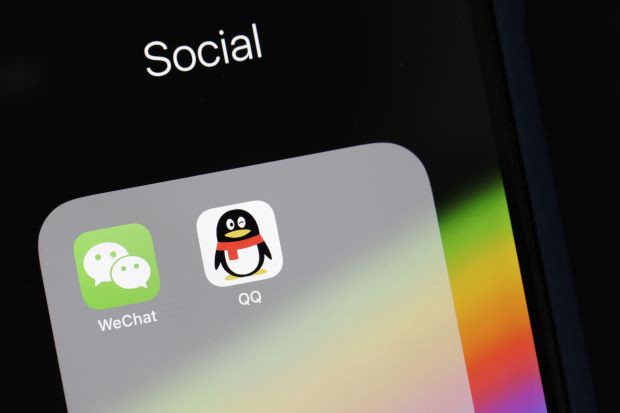
Tencent’s services don’t stop there. Its offerings also include music and video streaming, gaming, and more. In 2016, prominent Chinese author Wu Xiaobo published the bestselling book Tencent: 1998–2016 (腾讯传), which offers an intimate view of Tencent’s history while contextualizing the broader internet landscape in China. This post will cover some highlights from the book.
Pony Ma’s Early Years
In 1971, China was in a state of sociopolitical anxiety and detachment from the rest of the world. This is the year Ma Huateng was born — five years before communist ruler Mao Zedong’s death. A few years later, paramount leader Deng Xiaoping would forge the country’s efforts to open its economy to the world.
Born in Hainan province, Ma moved to the city of Shenzhen in Guangdong province with his family when he was 13. Shenzhen is known today as the “hardware capital of the world” and dubbed the next Silicon Valley. It started as a special economic zone instituted by Deng Xiaoping’s “reform and opening” policy in the late 70s.
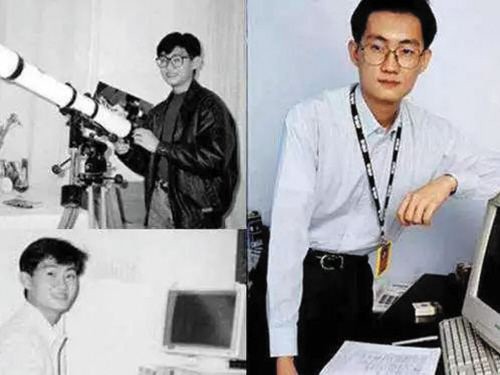
When Pony Ma was applying to college in 1989, the country was again under political stress. Parents wanted to have their children close by, so Ma’s college choice was Shenzhen University despite his scores in the Chinese college entrance exam (“gaokao”) being high enough for the nation’s top schools such as Tsinghua University. Ma was fascinated by astronomy since his early years and intended to pursue it as a major. Unfortunately, that was not an option at Shenzhen University, so Ma switched to computer engineering.
Ma was a quiet, industrious and high-achieving student in college. One of Ma’s professors noted that he was always reading or coding. Ma and his peers would hold “hacking contests” in the university’s computer labs, in which the goal was to write bugs that would deadlock a computer’s hard drive so that nobody other than the perpetrator could turn it back on. Ma’s classmates called him a “master hacker” who often caused lab machines to shut down indefinitely. In addition to being a fan of the C programming language, Ma also enjoyed building graphic user interfaces (GUIs). Back in the day, most computers ran on DOS (Disk Operating Systems) with no graphic affordances. Ma would build visual components similar to the Windows UI that had yet to reach China.
While he was a senior in college, Ma interned at Liming, one of China’s most prominent computing companies at the time. It was here that the 22-year-old built the first meaningful project of his life — a stock market analysis tool. In addition to the user interface, Ma implemented technical and quantitative analysis tools. Ma also taught himself about neural networks while trying to build a stock price prediction feature. Though many people built tools like this, it was the graphic interface in Ma’s software that caught his employer’s attention, who subsequently bought his tool for 50,000 Chinese yuan (CNY). This was equivalent to 3 years’ worth of salary for a recent college graduate.
By the time Ma graduated from college, he had not participated in student government or ran for leadership positions in student organizations. He was just a quiet, curious student who occasionally enjoyed hacking into computers on campus. After graduating, Ma joined Runxun corporation in Shenzhen as a software engineer. When searching for a full-time job, Ma showed Runxun the stock market analysis tool he built during his internship at Liming and received an offer the next day. His college friends Zhang Zhidong and Xu Chenyi — who would later become the CTO and CIO of Tencent— continued on with postgraduate studies.
During his 5-year career at Runxun, Ma developed a range of products and took on a managerial role. But being an effective engineer at a large corporation was just part of Ma’s identity. The other part was a highly ambitious and indomitable builder who enjoyed selling software he developed with friends.
Before the Internet, there was FidoNet
In 1994, Ma became intrigued by FidoNet. Originated in the US in 1984, FidoNet was a worldwide computer network used for communication between bulletin board systems (BBS). One can think of a BBS as a network of computers running file systems and forums that one can connect to using a terminal. Messages and files are sent through modems, which can transfer data over telephone wires.
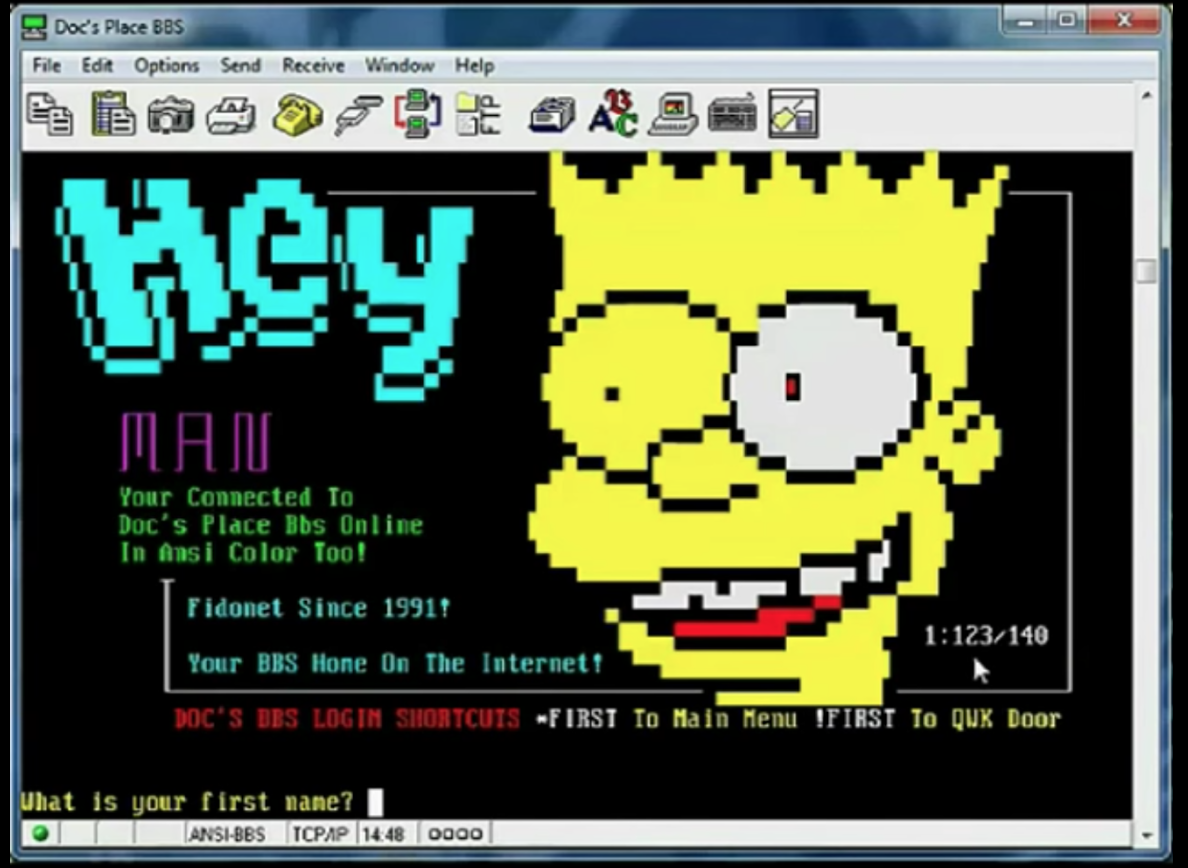
In 1991, Luo Yi established the first FidoNet presence in China called CFido. Soon, several hobbyists in China set up their own systems to join the network. Ma was fascinated by the fact that he could use a modem to dial into a BBS, where he could find and communicate with people from all over the world. It was magical to be able to access something that wasn’t on your local computer. Ma decided to set up his own FidoNet cluster and become a system operator. He used up almost all the money he earned from selling his stock market software to acquire and set up 4 phone cables and 8 computers.
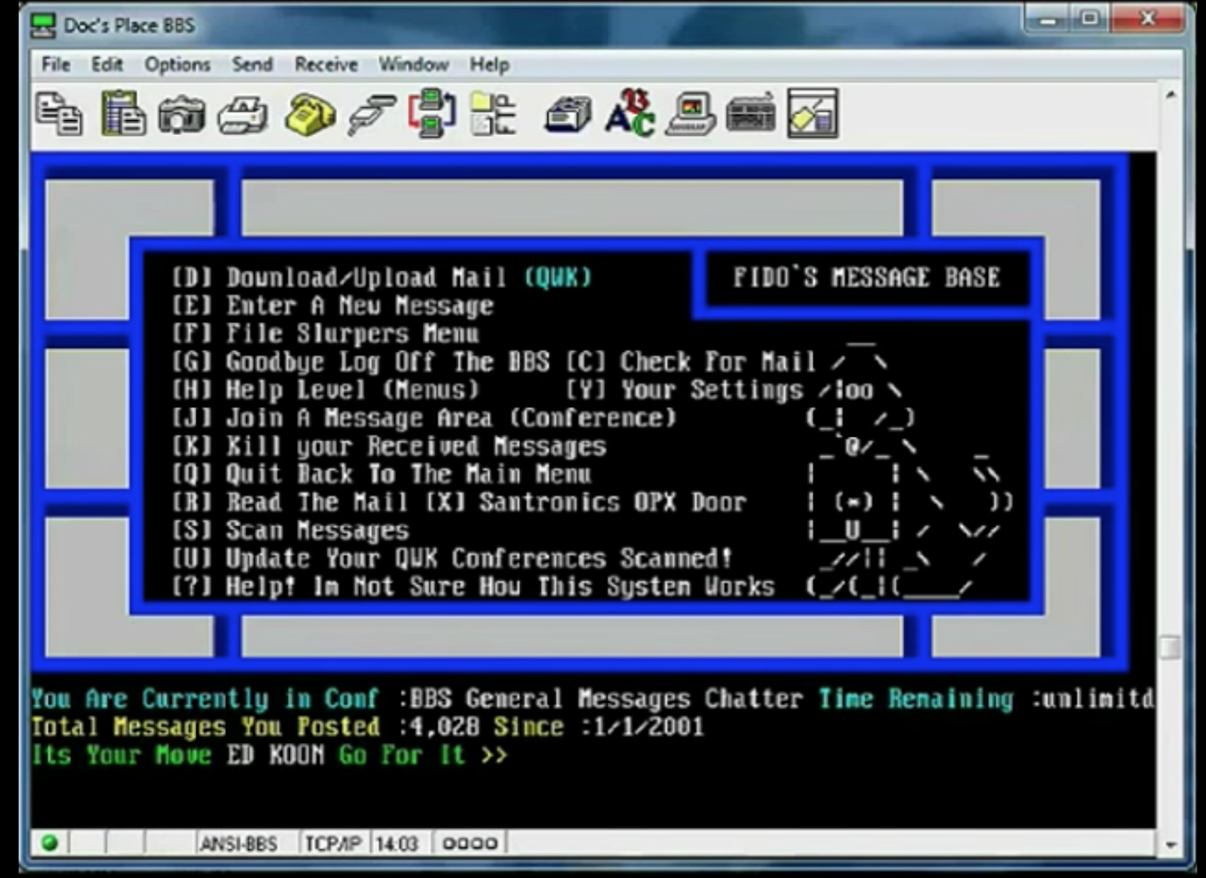
Several founders of China’s — and the world’s — most influential internet companies were already connected in the late nineties by their shared fascination for FidoNet. This was way before they rose to fame; it’s almost like the Chinese version of the Paypal Mafia.
In 1995, Lei Jun, who would later start Xiaomi — the greatest challenger of the iPhone market share in China — set up his cluster in Beijing.
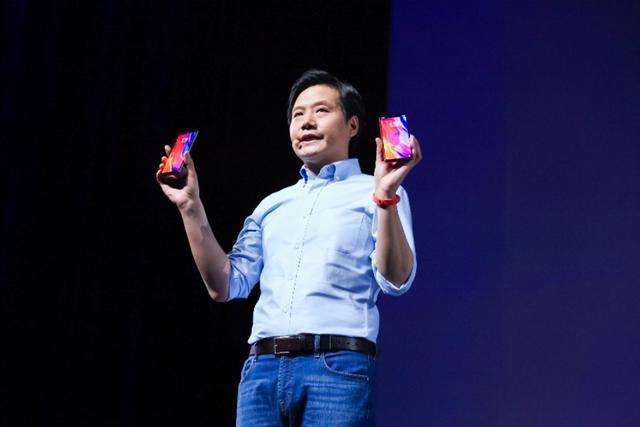
In 1995, Ma met Ding Lei, who would later become the founder of NetEase — one of the largest Internet and gaming companies in the world. Ding was also active in the Chinese FidoNet community. As the system operator of the Shenzhen cluster of FidoNet, Ma was responsible for greeting other enthusiasts who visited the region. Also a programmer, Ding had a desire to start a company since college. Ding had just quit his job and was traveling around southern China with the hopes of meeting some friends he made “online”. He eventually joined Sybase, an American software company in Guangzhou.
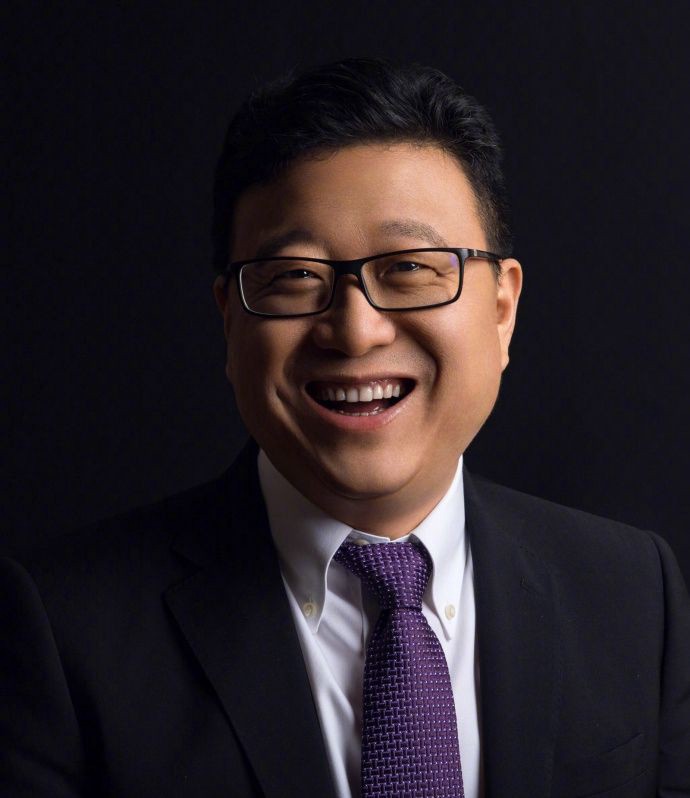
Ding Lei left Sybase a year later to join an ISP (Internet Service Provider) company. During this time, he learned of a new development in the internet landscape. In July 1996, Jack Smith launched the first free web-based email service, Hotmail, which got acquired by Microsoft a year later. Ding noticed the revolutionary potential of electronic mail, which led him to pour all of his savings into starting NetEase. With his friend from college, Ding developed the first free Chinese email service. NetEase made money by selling services to Chinese telecom enterprises, which made Ding the first profitable Chinese internet entrepreneur.
Ding’s story inspired Ma, who hadn’t achieved much since becoming a system operator for FidoNet. He remembered his own intention to develop an email system while working at Runxun but wasn’t able to find support. Ding’s move and success showed Ma that there were venture opportunities in the internet space. In the spring of 1998, Ma told his friend Zhang Zhidong at a coffee shop: “let’s start a company.”
The Startup
Ma pitched Zhang an idea to combine the internet with pagers (beepers). Pagers are wireless communication devices that allow people to send text and voice messages within a certain geographical area. Like an upgrade to walkie-talkies, pagers were widely used in the 80s and early 90s.
Ma’s idea was to use the internet to send email, news and more between pagers. Zhang was moved by Ma’s passion and quit his day job at Liming (even before Ma quit his at Runxun). They brought on their friends Chen Yidan and Xu Chenyi, forming a team comprised of four engineers. When they realized that none of them had sales experience, they brought on Zeng Liqing, who was working in the telecommunications division of Shenzhen city at the time.

What was happening in the greater internet world in the late 90s, when Tencent was born? In the United States, the “browser wars” between the Mosaic browser (Netscape) and Internet Explorer (Microsoft) were escalating. Sun Microsystems released the Java programming language. Steve Jobs returned to Apple after a hiatus and launched the iMac.
Zhang Chaoyang, a PhD at MIT returned to China to build Sohu, a Chinese search engine.
In 1998 and 1999, e-commerce behemoths JD.com and Alibaba were also founded. Robin Li left his PhD at The State University of New York, returning to China to start Baidu, the country’s largest search engine.
This was a “golden generation” of young Chinese entrepreneurs — all born in the 70s, many of which received world-class education and happened to be industrious programmers during the rise of the internet. They were the first cohort to receive venture capital and international investments. Robin Li and Zhang Chaoyang, who both got higher education degrees in the US, had seen the best of Silicon Valley and received funding in the early days of their startups. Once Jack Ma became the target of a Forbes article reporting on Alibaba’s popularity, he too was chased by international attention and capital. These young people were largely inspired by what they saw during the internet boom in the US.
Among all the Chinese internet startups, Tencent was the least eye-catching. It wasn’t an online portal, a search engine or an e-commerce website — it was hard to define exactly what Tencent did. Ma’s idea of a wireless pager was based on the risky premise that people would keep using pagers, which clearly did not happen.
ICQ and the Dawn of Instant Messaging
In 1996, three Israeli guys who just finished serving in the army developed ICQ (“I seek you”), an internet communication tool. One could use ICQ to chat online and share files. The team incorporated as Mirabilis and had about 10 million users when they got acquired by AOL at the end of 1998.
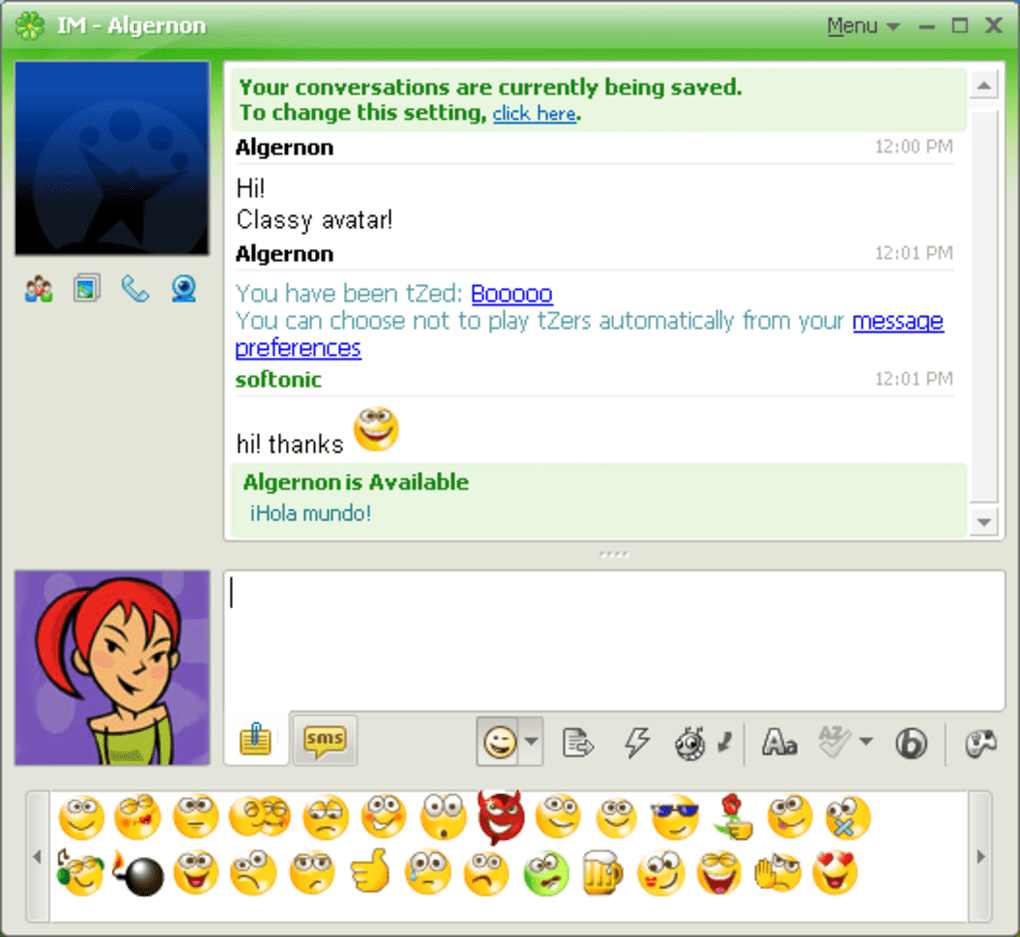
The Chinese clone of ICQ was developed by a Taiwanese company in 1998. Ma and his team at Tencent wanted to give it a shot as well, so he they built OICQ, where the “O” stands for “Open”.
Tencent was since split into two product areas: The paging software and OICQ. Tencent realized that there was still room in this instant messaging market dominated by ICQ, because the founders stayed in Israel after the AOL acquisition, and AOL was getting distracted by browser wars against Microsoft. And although there were Chinese versions of ICQ, Ma recognized their lack of strategy, branding and product-market fit. As such, the Tencent team focused on making OICQ suitable for mainland China, focusing on performance and functionality. They added features such as offline messaging (which ICQ did not support) and adding strangers as contacts. One day in 1999, the team noticed that OICQ had 500 users. But little did they know, this messaging app was about to consume all their cash.
In America, labor is expensive but equipment can be cheaper. In China, it’s the opposite. OICQ’s servers were having a hard time keeping up with the growing user traffic, so the engineers put a lot of effort into alleviating the burden on their servers. At one point, the number of users grew 4 times every 90 days. The team was running out of money for more servers. It’s important to remember that, because they had no revenue model, the Tencent team was doing freelance work to sustain the company. It was getting harder and harder to keep up with multiple jobs while OICQ sucked up all the money they earned from freelancing.
A Near-death Moment
In 1999, things began to look desperate. Tencent received a thick envelope from the United States. It was a letter from AOL’s lawyers: they were suing OICQ for theft of ICQ’s intellectual property and demanded that Tencent stop using the domains “OICQ.com” and “OICQ.net”. Ma gathered his co-founders, who all knew they didn’t have the funds to go to court for this. 9 months since its launch, OICQ reached 1 million users but Tencent only had $10,000 CNY left in cash. At this moment, Ma only had two options: try to raise more capital and cut costs, or sell Tencent.
He tried both. But attempts to sell Tencent were met with aversion. The potential acquirers couldn’t find an answer to how Tencent would make money. At one point, to estimate Tencent’s valuation, acquirers even factored in the number of computers, desks and chairs in their office. Ma and his team were hoping to sell the company for 3 million yuan, but the highest offer was 600k. So the founding team shifted their attention from selling and began borrowing money. One of Ma’s friends who lent him money said, “If you really run out of money, don’t worry about giving it back. I just don’t want any of your stock.” Zeng Liqing, the sales expert, suggested that they look for venture capital. “These people working in old-school IT can’t see the future. We need to find some crazier people — those who won’t just look for companies that are profitable right away, but instead could be huge in the future. That’s venture capital.” That was the first time Ma learned of the concept of VC.
At the time, the most famous venture capital firm in China was the US-born IDG Capital. Zeng used his contacts to arrange a meeting with IDG and prepared a 20-page business plan. When Ma and Zeng met with IDG’s Wang Shu, they lamented, “If IDG doesn’t fund us right now, Tencent might die. But even if you do give us money, the future is still uncertain.” Wang asked what they thought of Tencent’s future. Ma replied “I don’t know.” Years later, Wang would reflect on this moment: “That was when I realized he was a very down-to-earth leader, someone who could be trusted.”
When the Tencent deal reached the higher-ups in IDG’s Beijing office, the partners asked the same question as everyone else — “how will they make money?” Ma, after being repeatedly interrogated about his company’s revenue model, just said that all he knew was that this was something people liked to use, but didn’t know whom to make money from. In the end, IDG invested in Tencent for two main reasons: First, OICQ was indeed a popular product with traction — it was something people loved. Second, they saw the successful exit of the original ICQ when it sold to AOL, and hence assumed that OICQ was probably worth something.
Tencent proposed a valuation of 5.5 million USD. The founders wanted to keep majority stake in the company so they offered up to 40% of the company for $2.2 million. Another potential investor was Yingke, the fund led by the son of Asia’s richest man Li Kashing.
Tencent was down to its last penny when IDG and Yingke agreed to invest that $2.2 million, and each would own 20% of the company. Had the funding been delayed a little further, Tencent would have died not just on its own, but likely due to the impending dot-com crash. In April 2000, NASDAQ plummeted and the largest internet companies in the world were losing most of their market value. Yahoo dropped from a market value of $93 billion to $9 billion, Amazon from $22 billion to $4 billion. Had Ma and Zeng not found and convinced IDG in time, or had Wang Shu of IDG not taken this bet, Tencent would probably not exist today.
Tencent was eventually ordered to return the domains “OICQ.com” and “OICQ.net” to AOL. When one of the Tencent employees heard some users talking about OICQ on a bus, he noticed they were calling it “QQ”. This cute-sounding variant of “OICQ” became the product’s new name.
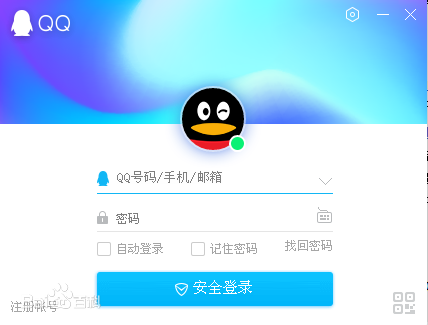
The money Tencent raised from IDG would go towards provisioning more servers and paying salaries. But the source of revenue was still an unanswered question. Soon, the search for a buyer resumed. Tencent approached Sohu, Yahoo China and several others, all of whom turned them down. During these desperate times, the user base continued to grow substantially. Ironically, QQ’s user base was reaching 100 million and not a single person in China wanted to buy Tencent.
One day, a couple people claiming to be from the Chinese office of MIH, an investments firm owned by South-African media giant Naspers, walked into Tencent’s office in Shenzhen. This was the first time Ma and his team learned of MIH and Naspers.
Wang Dawei, who represented MIH in China, has a habit of visiting internet cafes in new cities he visits. He noticed that everyone had a program called QQ on their desktops, so he assumed that this must be a formidable internet company. Everyone’s business cards also contained their QQ id numbers, and that further piqued his curiosity. Ma showed Wang some user growth graphs and told him about the 500k new users joining daily. This kicked off the investment talks between MIH and Tencent. MIH valued Tencent at 60 million USD and wanted to be the largest shareholder in the company. The Tencent team was strongly against giving up majority control of the company but were elated about the valuation that was 11 times higher than the previous year’s.
IDG was also excited about MIH’s valuation, which signified a return on their investment. IDG conceded 12.8% of their 20% stake in Tencent, keeping 7.2%. Yingke gave up all 20% of Tencent it owned. MIH wound up with 32.8% of Tencent and became its second largest shareholder after the founders. This was one of the greatest deals in venture capital history.
“Seriously, How Will You Make Money?”
Tencent had various attempts at monetizing QQ, none of which took off until a feature was introduced in 2002. Product manager Xu Liang learned of a Korean website, sayclub.com, which had a feature that allowed people to create avatars with personalized hairstyles, facial expressions, clothing, etc. It was a paid service that the Korean public loved. The website had 1.5 million users who paid an average of 5 CNY per month. Xu quickly hired someone to translate the sayclub.com website from Korean and pushed for Tencent to build something similar.

After convincing Tencent’s executives, QQ promptly launched QQ Show, their own avatar feature. People would pay to obtain “Q coins”, which could then be used to purchase avatar components in the QQ marketplace. All accessories cost between 0.5 and 1 CNY. QQ users who paid for the service could have their avatars show up across chat rooms. Within the first half year of QQ Show’s launch, the service had about 5 million paying users who each contributed about 5 CNY a month. You could argue that this was a cultural movement as well, since the Chinese population was used to being “dull” and collective in their personal representation. All of a sudden, an individual could express themselves through colors and outspoken authenticity.

To take QQ Show and exclusive features to the next level, Tencent launched a VIP membership called the “red diamond membership.” For 10 CNY each month, paying users got exclusive access to monthly virtual gifts, received a red diamond icon next to their display name, and enjoyed discounts in the QQ marketplace. This made paying members feel like QQ royalty. This set of monetization efforts allowed Tencent to generate tens of millions in monthly revenue.
In the late 1990s, Microsoft doubled down its efforts in China. In 2001, Windows was used by 90% of all computers. Microsoft also announced a strategy to expand MSN further in China, which posed a huge threat to Tencent, who viewed Microsoft as an intimidating giant. When the 2004 version of QQ launched, it didn’t have the support of enterprise companies. QQ seemed like a casual chat application, not a serious communication tool. On the other hand, MSN was the tool for offices. To fight back, Tencent looked to email.
Hotmail was the incumbent, so Tencent decided to acquire one of its biggest competitors in China, Foxmail. Foxmail was developed by a legendary software engineer, Zhang Xiaolong. Foxmail, a freeware email client, was built in 1996 by Zhang himself. It wasn’t necessarily a copy of anything — it even came before Outlook. When Foxmail launched, it got 4 million Chinese users within a year. Foxmail was acquired by Tencent in 2005 to build QQ Mail.
In 2010, an app called Kik messenger emerged. It let users exchange free messages via wifi or cellular data with people in their phonebook. Within 15 days, Kik had 1 million users. This caught Zhang Xiaolong’s attention, and he asked Ma to let him build a similar product.

Another entrepreneur mentioned earlier, Lei Jun (founder of Xiaomi), had also noticed Kik. But his company Xiaomi reacted incredibly quickly — after just 1 month of development, Xiaomi launched Mi Chat, first in Android and then for iOS. Shortly after that, Zhang’s team at Tencent came out with WeChat. But instead of launching on Android first, they shipped the iOS version. For the next few months, the two apps raced against each other. Mi Chat incorporated voice messages, and WeChat followed suit. After adding this feature, WeChat’s users went from 10–20k to 50–60k. WeChat continued launching new features such as “shake to see who’s nearby”, “send a message bottle”, and more. Mi Chat’s servers had trouble keeping up with the user growth, leading to multiple outages in a day. The game-changing feature that led to WeChat’s triumph was “find people nearby.” After this feature shipped, WeChat started acquiring 100k new users daily.

Zhang, a fan of Michael Jackson’s music, claims that product leaders should be strong arts and humanities people. In a presentation at Tencent, Zhang said that product visionaries have a breadth of artistic interests: art, music, reading, photography, travel and other seemingly “unrelated” experiences that enable them to develop modern taste and a broad understanding of humans and the world. This reminds us of Steve Jobs’s perspective on the intersection of humanities and sciences:
“I read something that one of my heroes, Edwin Land of Polaroid, said about the importance of people who could stand at the intersection of humanities and sciences, and I decided that’s what I wanted to do.”
In 2012, WeChat reached 100 million users. It has the fastest user growth in the history of social media apps — it only took WeChat 433 days to reach this milestone. It took QQ 10 years, Facebook 5.5 years and Twitter 4 years.
That same year, WeChat launched “Moments”, a feature similar to the Facebook News Feed where users can see status updates from friends.
Subsequently, WeChat came out with “red envelopes” for sending money between friends and chat rooms, as well as public accounts for businesses to share updates and interact with their audiences via bulletins and bots. This feature changed the way businesses in China work. Users can now search for a topic or account (or scan a QR code) to subscribe to any public page. This also allows them to engage with brands, organizations and publications in a 1:1 messaging interface. Businesses use it to broadcast new products and interact directly with customers.
In China, it’s not a big deal if you forget your wallet at home. If you have your phone, WeChat can take care of making payments, buying your maglev ticket or booking your next vacation.
Evidently, China’s internet landscape is a reflection of the global creativity that elevated the world from bulletin board systems to mobile devices. The giants born in the late 90s are not only ubiquitous in China, but have insatiable ambitions to capture unprecedented markets. We haven’t even touched on newer entrants like Bytedance, world’s most valuable unicorn and parent company of Tik Tok and Toutiao. As Ma proclaims, “although there are a lot of big technology companies today, humanity is still at the dawn of the internet era.”
from: https://hackernoon.com/the-chinese-social-network-bb282204af9c
No tags for this post.
One thought on “The Chinese Social Network”
The Chinese Social Network | 酷 壳 – CoolShell 3F
[url=http://www.gy815u50av1ts10h038u3bn02gzyzy13s.org/]usjktbzm[/url]
sjktbzm http://www.gy815u50av1ts10h038u3bn02gzyzy13s.org/
asjktbzm